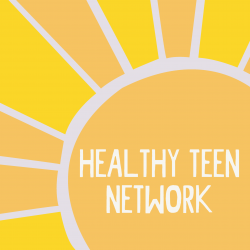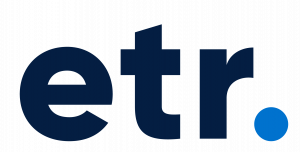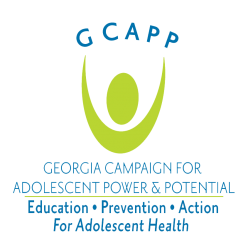What does (and doesn’t) motivate people to listen to messages about the value of sex education? In this mini-course, practice building effective messages by working through real-world scenarios using evidence-based communication techniques.
Training Hub
The Sex Education Collaborative Training Hub lists trainings for sex educators, facilitators, and other professionals on best practices for sharing important information with clients and the public. From teaching anatomy inclusively to effectively addressing bias in the classroom to addressing racial justice and equity in sex education, the Training Hub includes trainings, technical assistance, and policy support from state, regional, and national leaders in the field of sex education.
Please note: The Training Hub includes both in-person and online professional trainings. If you see a training you are interested in and it isn’t listed as virtual, please reach out directly to any of our members to find out what's possible!
Trainings Offered by State-Based and National Organizations
Displaying results 141 - 145 of 154Building Support for Sex Education in Schools
- Indicator 1 (K-12): Describe three health (e.g. physical, social and/or emotional) and/or academic benefits of sex education for young people
LGBTQ+ 101
How can sex educators ensure that students of all sexualities and genders feel 'seen' and affirmed? This training will cover the basic knowledge instructors need to feel competent leading discussions and answering questions, and will help build skills to create inclusive environments.
- Indicator 1 (K-12): Explain how availability of supportive school staff, presence of Gay-Straight Alliances (GSAs), LGBQ-inclusive curricular resources, and the presence of comprehensive, enumerated anti-harassment school policies are related to improved school climate for students of all sexual orientations.
- Indicator 2 (K-12): Define sexual orientation and sexual identity, including that everyone has both.
- Indicator 3 (6-12): Explain the difference between sexual orientation, sexual behavior, and sexual identity.
- Indicator 4 (K-12): Demonstrate the use of inclusive and affirming language. (S)
- Indicator 5 (K-12): Demonstrate the ability to intervene effectively in homophobic and other bullying comments and actions. (S)
- Indicator 6 (K-12): Explain three ways that LGBQ+ youth are at disproportionate risk for health disparities.
- Indicator 7 (K-12): Identify three credible, medically accurate, youth-friendly resources that can provide information or support related to sexual orientation.
- Indicator 8 (K-12): Explain why it is essential to include positive portrayals of LGBQ+ people in lessons.
- Indicator 9 (K-12): Demonstrate three strategies that can be used to include positive portrayals of LGBQ+ people in lessons. (S)
- Indicator 1 (K-12): Explain how availability of supportive school staff, presence of Gay-Straight Alliances (GSAs), gender-inclusive curricular resources, and the presence of comprehensive enumerated anti-harassment school policies are related to improved school climate for students of all gender identities.
- Indicator 2 (K-12): Demonstrate the use of inclusive and affirming language. (S)
- Indicator 3 (K-12): Define gender identity and sex assigned at birth.
- Indicator 4 (K-12): Explain how gender identity and gender expression are distinct from each other and from sexual orientation.
- Indicator 5 (K-12): Demonstrate the ability to intervene effectively in transphobic, sexist, misogynistic and other gender-related bullying comments and actions. (S)
- Indicator 6 (K-12): Explain three ways that transgender and gender expansive youth are at disproportionate risk for health disparities.
- Indicator 7 (K-12): Identify three credible, medically accurate, youth-friendly resources that can provide information or support related to transgender and gender expansive people.
- Indicator 8 (K-12): Explain why it is essential to include positive portrayals of transgender and gender expansive people in lessons.
- Indicator 9 (K-12): Demonstrate three strategies that can be used to make lessons affirming for transgender and gender expansive people. (S)
Personal Safety: Knowing Signs and Drawing Lines
Personal Safety: Knowing Signs and Drawing Lines will help increase middle and high school health professionals’ knowledge of various forms of interpersonal violence that young people often face, as well as provide concrete actions that educators and professionals can take to respond.
Format/platform:
- Online Learning Management System (Canvas e-learning), hosted by Rutgers University
- Six-hours of total contact time utilizing videos, podcasts, instructional games, discussion boards, written assignments, presentations, readings, and visual animations
- Asynchronous
- Instructor-led
All content is aligned to the National Sexuality Education Standards, the National Teacher Preparation Standards for Sexuality Education, the Professional Learning Standards for Sex Education, and the Areas of Responsibility and Competencies for Health Education Specialists.
- Indicator 2 (K-12): Demonstrate three student-centered instructional approaches that support a variety of learning styles. (S)
Pornography: Important Messages for Youth
In this training, participants will:
- Define sexually explicit media/material (SEM) and pornography.
- Identify 3-4 reasons why young people consume SEM.
- Identify 3-4 common concerns about SEM consumption for all ages and for youth specifically.
- Summarize existing evidence about SEM consumption, specifically as relates to youth.
- Utilize components of media literacy in conversations with youth about SEM.
- Identify 3-4 messages to share with youth regarding SEM.
- Indicator 1 (K-12): Explain three reasons why it is important to respond to every question students ask when teaching sex education.
- Indicator 2 (K-12): Demonstrate the ability to effectively respond to three different types of challenging questions. (S)
- Indicator 1 (K-12): Describe three health (e.g. physical, social and/or emotional) and/or academic benefits of sex education for young people
- Indicator 2 (K-12): Describe state and/or district laws, policies, and standards that relate to sex education where one teaches.
- Indicator 2 (K-12): Describe how verbal and nonverbal expression of personal values, and comfort with topics related to sex education, could impact one’s teaching
- Indicator 3 (K-12): Explain the importance of educators refraining from sharing their personal values when implementing sex education.
- Indicator 4 (K-12): Demonstrate the ability to respond effectively to students’ values-based comments and questions. (S)
Reaching the Adult Learner: The Science & Art of Masterful Facilitation
This session is intended for those who work with adult learners who wish to create a powerful learning environment that results in clients taking action. With adult learners, it’s often clear what to present, but how to present it may be more challenging. Participants explore the latest in professional development research, learning theory, and brain research as it relates to adult learners to understand how the human brain acquires, retains, and applies information. They examine proven models and strategies for designing effective events, facilitating diverse groups, and motivating learners to take action. Additionally, in the longer session, participants review and practice best strategies for managing and preventing difficult training issues, including resistant or unengaged participants.
Objectives of this course:
- Describe the research-based elements of effective training design and delivery.
- Identify best practices for reaching adult learners.
- Adopt a variety of facilitation techniques and strategies that engage and motivate learners.
- Employ strategies to manage discouraged and/or resistant participants.
- Identify resources for further study and practice.
- Initiate a personal plan of action to strengthen their facilitation skills.
Visit ETR's Training & TA Form to submit your request and receive cost information.
- Indicator 2 (K-12): Demonstrate three student-centered instructional approaches that support a variety of learning styles. (S)
- Indicator 4 (6-12): Demonstrate how to use the experiential learning cycle when teaching. (S)
Additional Trainings offered by out-of-state organizations
- ‹ previous
- 14 of 49
- next ›
Connections Matter
Connections Matter is a training designed to engage community members in building caring connections to:
- Improve resiliency,
- Prevent childhood trauma, and
- Understand how our interactions with others can support those who have experienced trauma.
- Indicator 1 (K-12): Demonstrate three techniques to create an inclusive and affirming learning environment. (S)
- Indicator 3 (K-12): Describe three elements of a trauma-informed approach to sex education.
- Indicator 4 (K-12): Demonstrate three strategies of a trauma-informed approach to sex education (e.g. giving trigger warnings before content on sexual assault and allowing students the right to pass as appropriate, etc.). (S)
- Indicator 1 (K-12): Demonstrate the ability to build rapport with students. (S)
- Indicator 6 (K-12): Describe three strategies for actively involving parents, caregivers, and other trusted adults in a sex education program.




